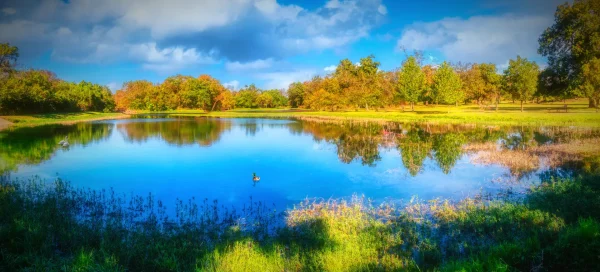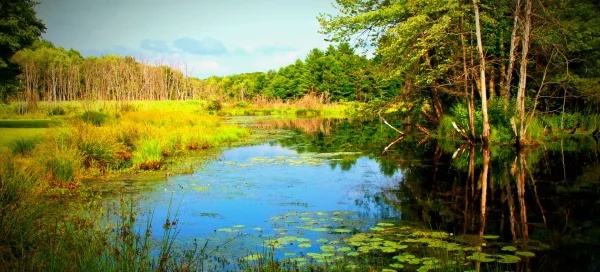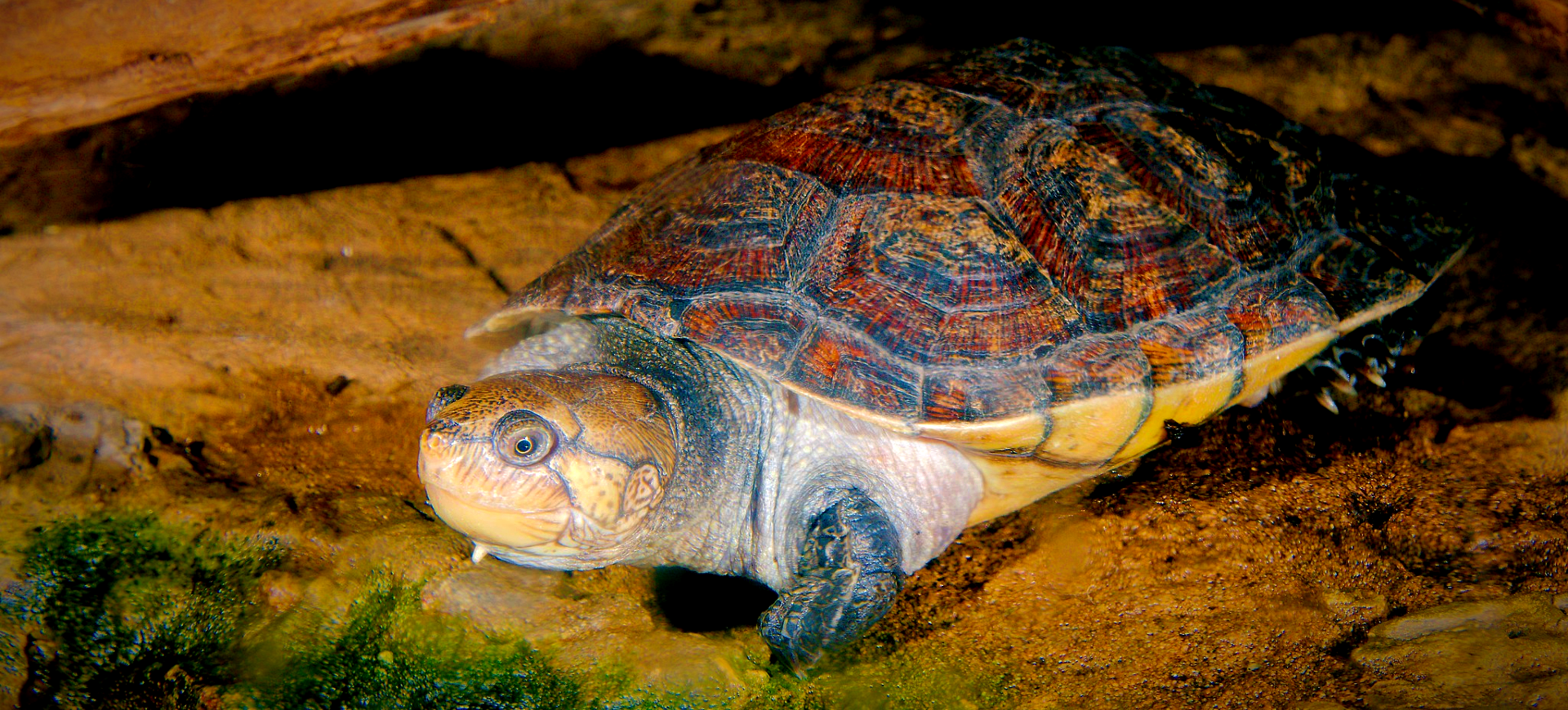Overview
The Yellow-spotted River Turtle (Podocnemis unifilis) is a large freshwater turtle native to South America. It is known for the distinctive yellow spots on the side of its head, which are particularly pronounced in juveniles and fade as the turtle ages. These turtles are found in various freshwater habitats, including rivers, streams, and lakes, predominantly within the Amazon and Orinoco River basins.
Adult Yellow-spotted River Turtles have a broad, smooth carapace, typically olive-green, providing camouflage in their aquatic environments. They are a highly aquatic species known to bask on logs or riverbanks. These turtles are omnivorous, feeding on plant material, fruits, and animal matter, such as fish and invertebrates. Their diet plays a role in seed dispersal for some plant species, contributing to the ecological health of their habitats.
Yellow-spotted River Turtles are notable for their communal nesting behavior. Females gather in large numbers on sandy riverbanks to lay their eggs, often traveling considerable distances to reach traditional nesting sites. The species faces challenges due to habitat loss and exploitation of meat and eggs, making conservation efforts crucial for their survival.
Taxonomy
Kingdom
Phylum
Class
Order
Family
Genus
Species
Type
Physical Description:
Yellow-spotted River Turtles are distinguished by their large, streamlined shells and the distinctive yellow spots on the sides of their heads. The carapace is typically olive-green, helping them blend into their aquatic environment. The plastron, or bottom part of the shell, is lighter, usually a yellowish color. These turtles have strong, webbed feet suited for swimming.
Adults can grow quite large, with females generally being larger than males. Their heads are proportionally large with powerful jaws, adapting to their varied diet. The bright yellow spots on their head become less pronounced as they age. Their overall body shape is adapted to their aquatic lifestyle, allowing efficient swimming and maneuvering.

Lifespan: Wild: ~20 Years || Captivity: ~30 Years

Weight: Male: 15 lbs (7 kg) || Female: 25 lbs (11 kg)

Length: Male: 18 inches (45 cm) || Female: 28 inches (70 cm)
Characteristic:
Native Habitat:
The Yellow-spotted River Turtle is native to South America, with a range that includes the Amazon and Orinoco River basins. Their habitat encompasses a variety of freshwater environments, including rivers, streams, lakes, and flooded forests. They prefer slow-moving or still waters with abundant vegetation.
These turtles are adapted to a tropical climate and rely on the availability of sandy areas for nesting. They are often found basking on logs or riverbanks, a behavior essential for thermoregulation. The health of their habitats is closely tied to the health of the river systems they inhabit, making them indicators of ecological well-being.
Climate Zones:
Biomes:
Biogeographical Realms:
Continents:
Diet:
Diet & Feeding Habits:
Yellow-spotted River Turtles are omnivorous, with a diet that includes plant and animal matter. They feed on aquatic vegetation, fruits that fall into the water, and small aquatic animals such as fish, snails, and insects. Their diet varies with age, with juveniles being more carnivorous and adults leaning more towards herbivory.
These turtles play a role in their ecosystems as seed dispersers, particularly for fruits they consume. They forage in the water and on land, often scavenging for food. Their feeding habits are influenced by the availability of food sources in their environment. Their diet typically comprises fruits, vegetables, and commercially prepared turtle food in captivity.
Mating Behavior:
Mating Description:
Yellow-spotted River Turtles have an interesting reproductive behavior. Mating occurs in the water and is often initiated by the male, who courts the female through specific behaviors. After mating, females travel to sandy riverbanks to lay their eggs, often returning to the same nesting sites yearly.
Nesting is a communal activity, with many females gathering to lay their eggs. They dig nests in the sand, depositing a clutch of eggs before covering them and returning to the water. The eggs incubate in the warm sand, with temperature influencing the sex of the hatchlings. After hatching, the young turtles make their way to the water, facing numerous predators.
Reproduction Season:
Birth Type:
Pregnancy Duration:
Female Name:
Male Name:
Baby Name:
Social Structure Description:
Yellow-spotted River Turtles are generally solitary, except during mating and nesting seasons. They exhibit social behavior during these periods, with males competing for mates and females gathering in large numbers to nest. Outside of these seasons, they are mostly independent, foraging and basking.
Environmental conditions, such as food availability and suitable nesting sites, influence their social interactions. The communal nesting behavior is a unique aspect of their social structure, with females often traveling long distances to reach traditional nesting areas.
Groups:
Conservation Status:
Population Trend:
The population of Yellow-spotted River Turtles is under threat primarily due to habitat destruction and exploitation. Deforestation, pollution, and changes in river systems are impacting their natural habitats. Overharvesting for their meat and eggs is a significant problem in some areas, leading to local declines.
Conservation efforts include habitat protection, regulation of harvesting, and education programs to raise awareness about the species. Research is ongoing to better understand their population dynamics and to develop effective conservation strategies. Captive breeding programs also play a role in conserving the species and potentially supporting wild populations.
Population Threats:
Major threats to Yellow-spotted River Turtles include habitat loss due to deforestation, pollution, and changes to river systems. Overexploitation for meat and eggs is a significant threat, particularly in areas with high demand for turtle products. Climate change may also impact their habitats and nesting sites.
Illegal wildlife trade is another challenge, with these turtles being collected for the pet trade. Predating eggs and hatchlings by introduced species and native predators can also impact population numbers. Conservation efforts aim to address these threats through habitat protection, regulation, and community engagement.
Conservation Efforts:
Conservation efforts for Yellow-spotted River Turtles focus on habitat conservation and regulating the exploitation of the species. Protected areas in their native range provide crucial habitats where they are safeguarded from human activities. Legislation to control hunting and egg collection has been implemented in some areas.
Captive breeding programs in zoos and aquariums contribute to species conservation by maintaining genetic diversity and providing research opportunities. Community-based conservation initiatives involve local communities in protecting nesting sites and raising awareness about the importance of these turtles. International cooperation is key to addressing cross-border conservation challenges.
Additional Resources:
Fun Facts
- Yellow-spotted river turtles are one of the largest species in their native range.
- Their yellow spots are most vibrant in juveniles and fade as the turtles age.
- They play a key role in their ecosystems as seed dispersers, especially for fruit trees.
- These turtles are capable of long-distance migrations to reach their nesting sites.
- They are known for their ability to bask for long periods, which is important for thermoregulation.
- The nest’s temperature determines the sex of the hatchlings, a phenomenon known as temperature-dependent sex determination.
- They have a relatively long lifespan, living up to 30 years or more in the wild.
- Yellow-spotted River Turtles have few natural predators as adults, but eggs and hatchlings are vulnerable to predation.
- In some cultures, they are considered a symbol of longevity and perseverance.
- They are an important species for study in the field of conservation biology, as their life history and ecological role provide valuable insights into freshwater ecosystems.






